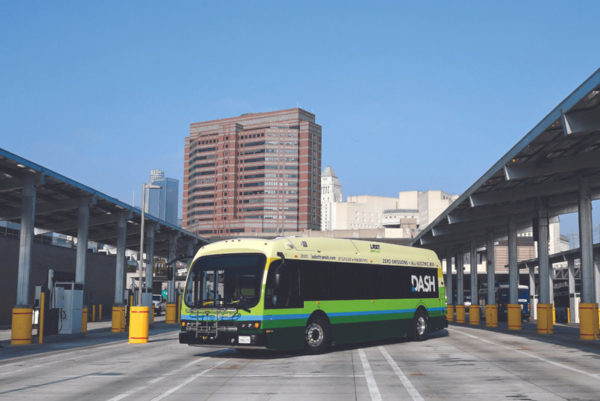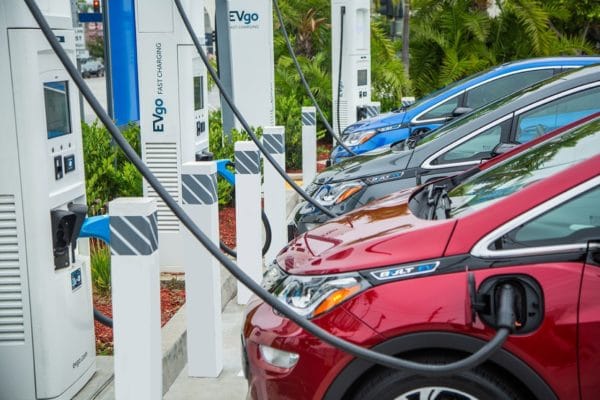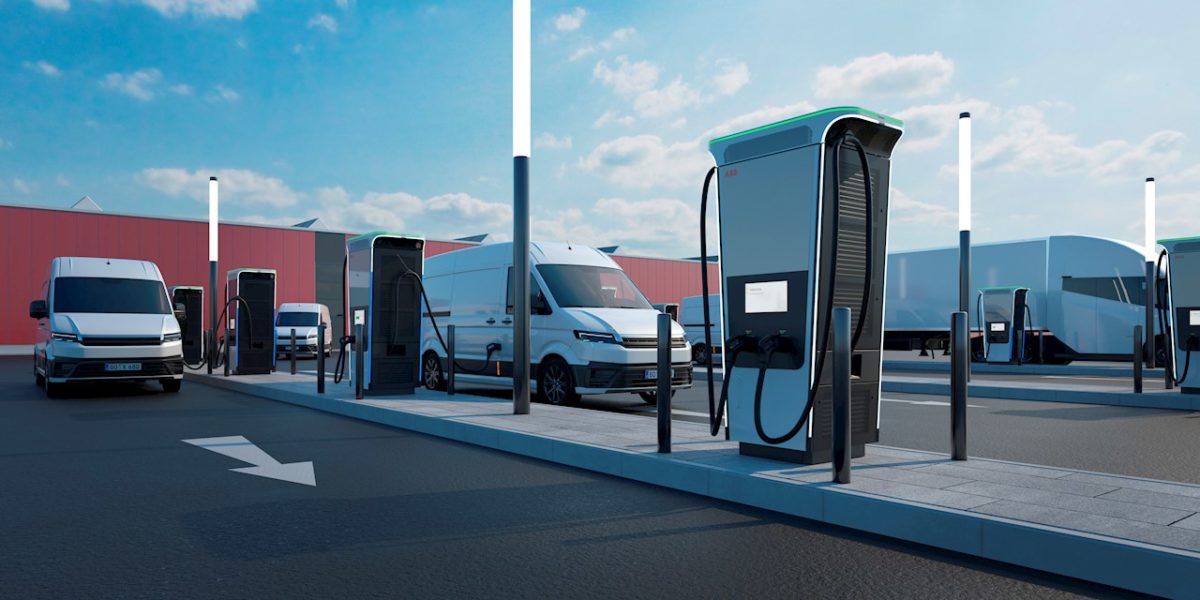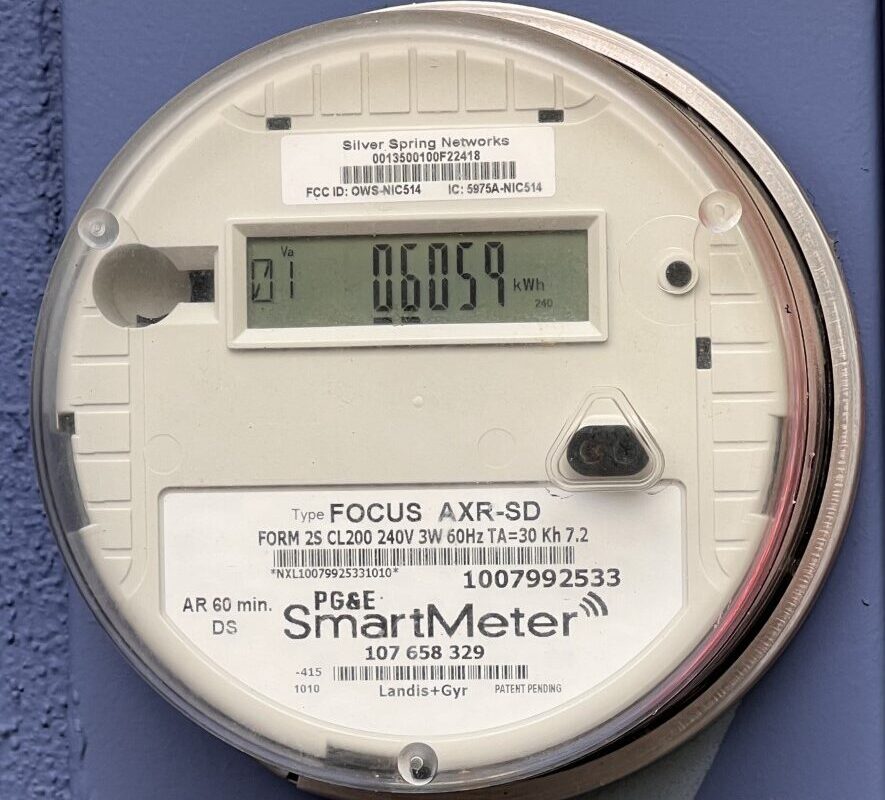Electric vehicle (EV) sales are taking off at breakneck speeds, reaching an all-time high in Q3 2021, even amidst an overall new-vehicle sales decline, according to Kelley Blue Book. Sales of new vehicles declined 13.4% year over year in Q3 primarily due to low inventory and high prices, while sales of electrified vehicles, which includes fully-electric vehicles, hybrids, and plug-in hybrids, jumped by nearly 60% during that same timeframe.
As of September 30, 2021, auto manufacturers in the US sold more than one million new electrified vehicles, and EV accounted for 10.4% of total vehicle sales in Q3, nearly double the volume of Q3 2020, when electrified vehicle sales comprised only 5.5% of total sales.
In June, General Motors said it would increase its EV and AV investments through 2025 to $35 billion, building on an initial commitment in March 2020 to invest $20 billion over the time period, including capital, engineering expenses and other development costs. In November 2020, it increased that total to $27 billion.
However, as EV adoption booms, deploying charging infrastructure that can support electric fleets remains a considerable barrier to be overcome. The Smart Electric Power Alliance (SEPA) has developed a report outlining how microgrids and managed charging can streamline deployment of charging infrastructure, while lowering energy costs, reducing carbon emissions, facilitating interconnection and improving the charging experience.
As the authors outline, utilities and fleet managers (think UPS or a transit authority, like MARTA) are typically presented with three options to meet the demand from fleet electrification.
- Build up the capacity of the system to handle the new load
- Incorporate on-site load management using software solutions and logistics, which requires fleet charging flexibility
- Add on-site energy storage and potentially microgrid control capabilities
According to the report, the first and second options can prove to be the most cost-effective if the fleet has flexibility in vehicle usage and scheduling; however, in any other scenario, the third option could prove to be similar in cost and have the ability to be implemented more quickly. Utilities and fleet managers with resilience mandates, interests, or policies, in the opinion of the authors, should explore options for on-site generation and microgrid capabilities to ride through an outage to charge their fleet.
Differences in fleet microgrids
When compared to a traditional microgrid for a building system, the report outlines that microgrids for fleet electrification present new challenges highlighted by the fact that microgrids for fleet electrification are modeled on anticipated demand, rather than an existing load, which can make reliable load-based modeling more difficult.

Source: Apparent Inc.
While this presents some difficulties in planning, fleets often permit charging flexibility within defined boundaries, providing a unique dispatchable resource that can be tuned to fit the needs and energy resources of the customer, enabling greater control over energy usage.
Especially among transportation authorities, fleet microgrids, and onsite solar-plus-storage have become a popular option for lowering electricity costs, while also providing free and programmable fueling options for vast quantities and different types of EV.
Barriers to fleet electrification and microgrids
In preparing the report, SEPA conducted industry interviews across auto manufacturers, solution (solar, storage, and microgrid) providers, fleet operators, and utilities, to identify the initial needs from each stakeholder group and some barriers standing in the way of fleet microgrids and overall fleet electrification.
Among auto manufacturers, the pressing needs were for more clarity for how needs vary for each customer class (are they buying sedans, heavy-duty work vehicles, busses, etc.), overcoming knowledge gaps with customers, understanding the different options their customers have when working with utilities and energy-as-a-service providers, clarity around the cost of charging infrastructure/utility service upgrades, and clarity regarding new and emerging business models from energy-as-a-service.
The biggest barriers these manufacturers identified were standards for how their vehicles will operate in a fleet microgrid, cost, space, and manufacturing constraints, sales cycle and long-term sales and manufacturing planning, and the lack of seamless communication between chargers, vehicles, and backend systems to connect to the vehicle.
Among solution providers, better approaches for determining a value of resilience; finding the right balance of sustainability, resilience, and economics; and understanding and awareness of energy-as-a-service or resilience-as-a-service business models were identified as the pressing needs.
For barriers, the providers identified a need for better managing and educating relevant stakeholders, the need for standardization around new technology, cost, and complexity in planning and implementation.
Fleet operators and utilities identified more comprehensive and specific needs.
For fleet operators:
- Prioritizing depot location rollout based on space availability, resilience need, reliability targets, existing capacity, and interconnection time.
- Shortening the upgrade time from 12-18 months to 8 months or less.
- An approach to better align the pace of EV technology changes and grid infrastructure technology implementation.
- Better understanding of options for rolling out fleet electrification quickly while managing risk.
For fleet operators, the barriers identified were lumped together with the previously-identified barriers by auto manufacturers.
For utilities:
- More transparent view of when and where fleets are coming.
- Tailored approaches to planning and forecasting for larger fleets and for smaller fleets.
- Resources to respond to customers who ask about solar, storage, and resilience needs.
- Resources to help utility employees and customers navigate the learning curve and better understand fleet electrification implications.
Utility barriers identified included funding availability, logistics, load forecasting, and cost.
Fixing the issue
Summarizing the litany of barriers and needs, the authors of the study presented four comprehensive issues and their best-case potential solutions.

The first identified barrier is that customers don’t know what their load will be in five years, 10 years, and beyond, and this issue is most tied to fleet operators and the utilities who serve them.
To fix this issue, the authors recommend improving communication and information sharing between fleet operators, solution providers, and the utility. This includes stakeholder-informed load forecasting and coordinated fleet planning amongst all stakeholder groups. The authors also identify a need for regulatory and policy actions to address the unpredictability may include increased funding for make-ready infrastructure, innovative tariffs, data transparency and consistency, and nationwide databases of programs and rate structures.
The second identified barrier is a lack of understanding on which stakeholder groups need education, and what exactly they need to be educated on to advance fleet electrification, since multiple groups identified lack of customer education as a major barrier.
The fix here, as proposed in the report, is to encourage cross-pollination between industry groups via conferences and workshops to educate all parties on EV, EV charging systems, and fleet electrification impacts on the grid. This can include basic training courses or virtual and in-person networking events. Regulatory and policy actions to close the education gap are also viable pathways.
The third barrier comes down to logistics, as the stakeholder environment is complicated and it’s not always clear what the roles and responsibilities are of each stakeholder group when a project is initiated.
Here, the proposed solution is to be flexible when identifying stakeholder roles and responsibilities in a given project with new energy and resilience-as-a-service business models. Before identifying each stakeholder groups’ roles and responsibilities, it’s critical to list out the scope of roles and responsibilities.
Finally, the report identified a lack of seamless communications between electric vehicles, charging, and the backend systems. Open charge point protocol and standards are not implemented uniformly across vendors, which is a barrier to scaling deployment.
The answer here is guidelines and best practices to streamline communications and implement standards for electric vehicles, charging, and the backend systems. Policy and regulatory actions to address standardization may include developing a clear and transparent process for how standards will be developed following a singular goal. This includes data sharing between vendors, fleets, and utilities, as well as updating interconnection requirements.
This content is protected by copyright and may not be reused. If you want to cooperate with us and would like to reuse some of our content, please contact: editors@pv-magazine.com.









we are a small solar panel manufacture in the mid west working on solar car chargers now hoping to relive some of this, we imported 100 mw line from Canadian solar when we are done with that set up we will be at market